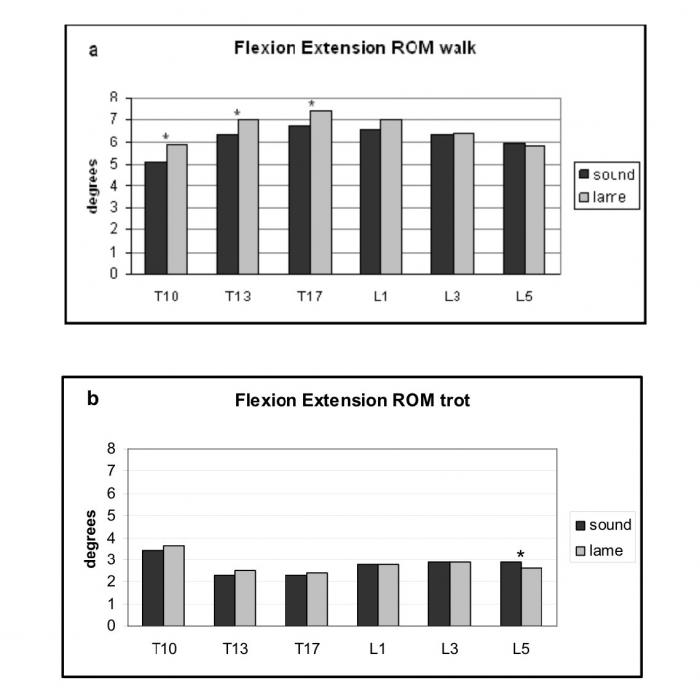
Effect of induced hindlimb lameness on thoracolumbar kinematics
Induced acute hindlimb lameness result at walk in a increase of flexion- extension (F-E) movements in the thoracolumbar spine (T10-T17) kinematics and a increase of pelvic axial rotation. In trot a slight decrease of F-E occurs at L5 and pelvic axial rotation and result in lowering the head during stand phase.
A low grade subtle lameness and their effects on back kinematics are difficult to detect in the clinically setting. Details studies are necessary to understand fully the effects on back kinematics.
Six warm blood horses were used in this study. A subtle hindlimb lameness (grade 2 AAEP) was induced using a modified shoe featuring a nut welded to the the inner side of the toe region in the left hindlimb. Data was collected on a treadmill before, during and after the induction of lameness while walking and trotting.
No effect on limb loading were measured although all were judged to be clinically lame. Lowering of the neck especially at the lame diagonal at trot. Lowering the neck helps to flex the cranial back. Stride length and protraction-retraction were not changed due to lameness. Hindlimb lameness produces a pelvic rotation towards the lame limb at walk and at trot towards the non lame side.
> C.B. Gomez Alvarez et al; Equine veterinary journal; 2008 40 (2) 147-152. All rights reserved to Department of Equine Sciences, Faculty of Veterinary Medicine, Utrecht University, Yalelaan 112, NL-3584 CM Utrecht, The Netherlands. Click here for the full-text article

(Image by: www.paardenwelzijnscheck.nl)

